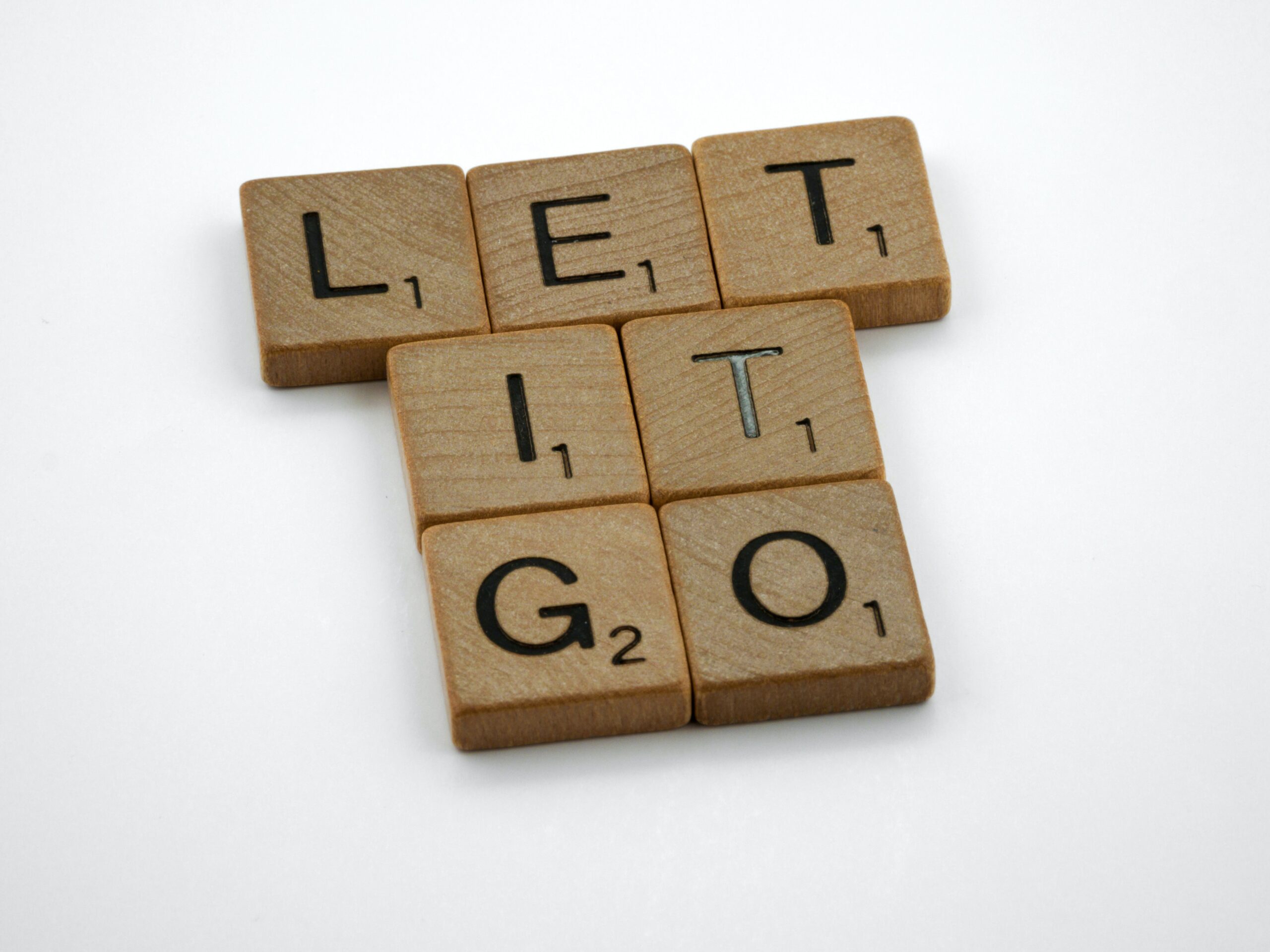In the grand tapestry of life, we humans have an uncanny knack for turning ourselves into living museums. Our mental exhibits? Memories, past hurts, regrets, and that one embarrassing moment from 10 years ago that, for some baffling reason, replays at 3 am.
Merging the insights from psychology and spirituality, it’s evident that there’s a tug of war between our innate need to hold onto things and the profound liberation that awaits when we muster the courage to let go.
Now, you might wonder, “Why do we grip so tightly in the first place?” Blame it on our brains’ love for the familiar or perhaps our souls’ yearning for deeper lessons. But here’s the golden nugget: when we embrace the strength of letting go, it’s like hitting the refresh button on our lives.
Suddenly, there’s space to grow, to discover, and, dare I say, to dance a little lighter on this beautiful journey of self-discovery. Let’s delve into this topic deeper.
Table of Contents
The Psychological Aspect of Holding On
Ever find yourself re-watching that one series or movie for the umpteenth time, even though there’s a whole world of new content out there? That’s a bit like how our brains treat memories and past experiences.
There’s comfort in what’s known. Our brains are hardwired to avoid pain and seek pleasure. Venturing into the unknown, whether it’s a new TV show or a fresh life direction, can be unnerving. So, our gray matter sometimes thinks, “Why not stick with the familiar rerun of past emotions and experiences?”
Now, this isn’t just a quirky quirk of ours. There’s a cognitive bias at play. Loss aversion, as the scientists call it, makes us overvalue what we have, even if it’s a rusty old belief, and be wary of letting it go.
“Better the devil you know than the devil you don’t,” right? But here’s where the plot thickens. When we let this mental rerun marathon continue, we might just be sidelining our personal growth and keeping fresh, transformative experiences at bay.
However, it’s not all doom and gloom in the theater of our minds. Recognizing this tendency is half the battle won. Once we understand that our mental attachment might be more about comfort and less about genuine value, we can begin to question what truly serves us.
It’s like curating our own mental Netflix; we get to decide which episodes stay and which ones, well, get the gentle boot.
So, while our brain’s inclination is to hold on, sometimes the bravest thing we can do is press the ‘stop’ button, step into the director’s chair, and embrace new storylines. After all, growth rarely happens in the comfort of reruns.

The Spiritual Perspective on Letting Go
In spiritual traditions worldwide, there’s a recurring motif: the power of detachment. Imagine, for a moment, that you’re holding onto a helium balloon, gripped tightly in your hand. The higher spiritual self whispers, “Let it go, and watch it rise.” But the human in us sometimes thinks, “But it’s MY balloon!”
This balloon, metaphorically speaking, could be anything—past grievances, fears, even that sweater from 2005 that doesn’t fit anymore but we’re convinced it will come back in style.
Many ancient teachings, especially those in Buddhism, sing praises to the concept of impermanence. Everything changes, nothing remains the same. It’s like spiritual jazz; everything’s constantly improvising.
By understanding that the universe itself is in a beautiful dance of constant flux, we realize that clinging to anything too tightly is, in essence, going against the cosmic groove.
Then there’s the serene art of surrender. Letting go doesn’t mean giving up or admitting defeat. It’s about trusting the grand choreography of the universe, believing that sometimes, the Universe’s playlist might have a better tune for our current life’s dance.
When we release our iron grip on how things “should” be, we open ourselves up to the magic of how things could be.
In essence, the spiritual view is clear: let go, trust, and let the Universe surprise you. Because, as any wise soul will tell you, sometimes the best gifts are the ones we didn’t even know we needed, simply because we were too busy holding onto that metaphorical balloon. And who knows? Maybe, just maybe, once we let go, we’ll find we can fly.
Embracing The Strength of Letting Go
We’ve all heard the sayings, “Hang in there!” or “Never give up!” And while there’s wisdom in tenacity, there’s also a profound strength hidden in the understated act of, well, letting go.
Think about it: doesn’t it require more muscle to carry a heavy backpack on a long journey than to, occasionally, put it down, sift through, and chuck out items you don’t need? Similarly, life comes with its baggage—of memories, experiences, and garage-sale-worthy beliefs—and the strength to evaluate and release is, dare I say, as heroic as carrying them.
This isn’t a call to become spiritual Marie Kondos, tidying up our mental spaces (though, not a bad idea!). It’s about recognizing the transformative power of acceptance.
When faced with challenges, resilience isn’t just about pushing through; it’s also about discerning when to pause, reassess, and perhaps change directions. It’s like being in a dance-off. Sometimes, the strongest move isn’t the most intricate one but the one where you simply flow with the music.
We often romanticize stories of endurance and persistence, and rightfully so. But hidden in the background, there’s a mosaic of tales where heroes found their strength in releasing, in shifting sails, and in gracefully bowing out of a dance that no longer resonated.
These stories might not always make the headlines, but they shine a light on a different kind of power—the strength to be fluid, adaptive, and open to new horizons.
In the grand orchestra of life, while some instruments play the tunes of perseverance, others serenade the beauty of letting go.
The challenge, and also the adventure, is figuring out when to listen to which melody. Because sometimes, strength isn’t about holding on for dear life; it’s about realizing when the tune has changed and having the courage to dance anew.

Practical Steps to Cultivate the Strength to Let Go
Alright, here’s the deal: Knowing is one thing, doing is another. It’s like knowing chocolate cake isn’t the best breakfast option, but oh, how it beckons! So, how do we pivot from understanding the art of letting go to actually, you know, letting go?
Fret not! A blend of psychology and spirituality gifts us with a toolkit that’s as effective as it is soul-soothing.
First Up: Mindfulness and Meditation
Think of them as the gym for your letting-go muscles. These practices help us become aware of our attachments and see them without judgment. It’s like having a magnifying glass for the soul, where you can spot those mental splinters and decide if they’re worth keeping around.
And trust me, just like realizing you’ve been wearing mismatched socks all day, some realizations will make you chuckle!
To start practising mindfulness and meditation:
- Try this loving kindness meditation
- Download a meditation app like Headspace, Insight Timer, Sattva, etc.
- Try this box breathing exercise
Then There’s the Magic of Cognitive Restructuring
Fancy name, simple concept. It’s about challenging and changing those pesky beliefs that no longer serve us.
Imagine having an old, clunky TV and then discovering Netflix; that’s the kind of upgrade we’re talking about! Sprinkle in some spiritual rituals—journaling, visualization, maybe a dash of prayer—and you’ve got a recipe to foster release with a side of growth.
To help you with cognitive restructuring try:
- Identifying Negative Thought Patterns:
- Begin by keeping a “thought journal” for a week or two. Jot down situations that trigger strong emotional reactions and the accompanying thoughts. Over time, you’ll start to notice patterns of negative or irrational thinking (e.g., “I always mess up” or “No one likes me”).
- Challenging and Questioning Those Thoughts:
- For every negative thought identified, ask yourself a series of questions:
- “Is this thought based on facts or assumptions?”
- “Have there been instances that prove this thought wrong?”
- “Is there a more positive or neutral way to view this situation?”
- This process helps in breaking down irrational beliefs and replacing them with more balanced thoughts.
- For every negative thought identified, ask yourself a series of questions:
- Replacing Negative Thoughts with Balanced Ones:
- Once you’ve challenged a negative thought and identified its irrationality, craft a more balanced or positive counter-thought. For instance, if the negative thought is “I always fail at tasks,” a balanced thought could be, “Sometimes I face challenges, but I’ve also had many successes. I can learn and grow from each experience.”
Last But Certainly Not Least, Lean On Your Tribe
Last but certainly not least, lean on your tribe. Whether it’s therapy, spiritual guides, or simply tea sessions with friends who get you, sharing and seeking guidance can be immensely cathartic.
Sometimes, the act of letting go is a solo dance, but more often than not, it’s a group jig. And in the rhythm of release, it’s always nice to have some fellow dancers cheering you on.
To lean on your tribe:
- Open Up and Share:
- Initiate conversations with trusted friends or family members about what you’re going through. This vulnerability can foster deeper connections and allow others to offer their insights, advice, or simply a listening ear.
- Participate in Group Activities or Support Groups:
- Engage in community events, workshops, or support groups that align with your interests or challenges. Whether it’s a hobby club, a meditation group, or a support circle for specific life challenges, these gatherings can provide valuable perspectives and encouragement.
- Seek New Connections If You Feel Alone:
- If you feel like you don’t have a “tribe” or a supportive circle, it’s never too late to build one. Start by attending local meetups, joining clubs, volunteering, or even participating in online forums or groups related to your interests. Every relationship starts with a single interaction, and with time and effort, you can create a network of supportive connections.
- Connect to the Universe/Life/Spirit Guides:
- Through prayer, meditation, signing, chanting, or journaling, connect to a higher power. Whenever you tap into this connection with Life/Universe/Spirit guides (whatever you’re most comfortable calling it), you’re reminded that you’re not alone.
The Ripple Effects of Letting Go on Personal Growth
Imagine tossing a pebble into a still pond. What starts as a tiny splash soon sends ripples across the entire surface. The art of letting go is kind of like that.
It begins as a personal act, small and intimate, but its effects? Oh, they ripple through every facet of our life, bringing with them a freshness that feels like morning dew on a spring day.
Now, once you’ve chucked that metaphorical pebble (or, in some cases, a sizable rock) of past burdens into the pond of life, you’ll notice something wonderful: space. Space to breathe, to dream, and, most importantly, to grow.
By not being tethered to the past, you’re free to be present, to be here and now. It’s like clearing out your closet and realizing you now have room for new outfits, or better yet, some fun dance moves without knocking over that old lamp.
This newfound presence isn’t just refreshing—it’s transformative. You start noticing the little joys, the silver linings, the lessons in the missteps.
It’s as if you’ve put on a pair of glasses you never knew you needed, and suddenly the world is in HD! And the best part? This clarity leads to a deeper connection with yourself and the universe. Think of it as being on a first-name basis with life itself, having heart-to-heart chats over metaphorical cups of tea.
So, in essence, the act of letting go isn’t just about personal relief; it’s the catalyst for a more vibrant, connected, and yes, groovy existence.
After all, when you dance through life unburdened, every step, twist, and twirl becomes a celebration of the glorious journey of growth. And who wouldn’t want front row seats to that show?

Final Thoughts
And so, as we stand at the crossroads of psychology and spirituality, it’s clear that these two fields, like peanut butter and jelly, are a match made in introspective heaven. They remind us that life isn’t about hoarding experiences or beliefs like they’re limited edition collector’s items.
Instead, it’s about curating, refining, and occasionally chucking out what doesn’t quite fit anymore. It’s less about building a fortress from our past and more about crafting a bridge to our future.
Letting go, as we’ve seen, is neither a sign of defeat nor an admission of weakness. It’s the silent nod of understanding, the gentle exhale after a deep breath, the space between musical notes that makes the melody shine.
By becoming researchers of our own souls, diving into the nooks and crannies of our psyche with a blend of science and spirit, we unlock the doors to our most authentic selves.
So, here’s to embracing the strength in letting go, to dancing in the ever-changing rhythm of life, and to discovering the countless wonders that await when we give ourselves the permission to release, refresh, and rejuvenate.
After all, the best stories often begin when one chapter ends, and another, filled with potential and promise, beckons. Ready to turn the page?
Recommended Resources and Further Reading
Now, dear reader, if this article tickled your curiosity and you’re itching for a deeper dive, I’ve got you covered. If you enjoyed reading this article, you might enjoy “The Art of Self-Reflection.”
For the brainy buffs and book worms, there’s a book called “Letting Go: The Pathway of Surrender” you might find interesting.
Last but not least, if you’d like to take an online class (hosted by yours truly) and learn how journaling can help you with self-reflection, check out my online class “Journaling For Self-Reflection.”
